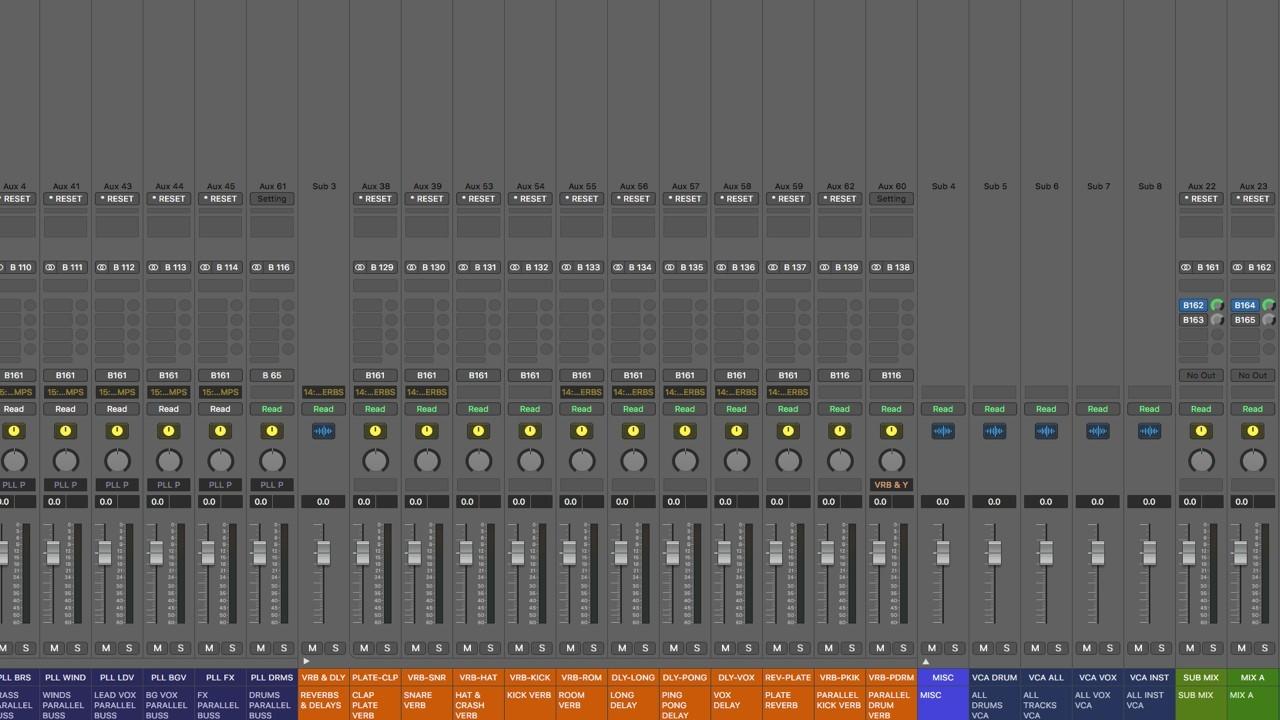


DAWs are much more limitless and allow you to create just the amount of VCAs you need. Physical consoles will probably have limits on the amount of VCAs you can create. You could create separate VCAs for your drums, your background vocals, all your guitars, all the strings, etc. This gives you easy control over multiple channels at once. The easiest and most logical explanation of VCAs that I ever heard was this: The VCA group channel's level affects not only the output level of the individual channels but also all the levels of any post-fader sends on those channels. It effectively means it behaves like a master controller altering how much amplitude is being sent out of the individual channel strips. The way a VCA achieves this is by varying the amount of power that is given to a particular channel. And it will do so while maintaining the relative levels and without altering any of the individual faders on the individual channels. What this means is that dragging the volume fader on our "Drums" VCA channel up or down will effectively bring up or down the volume on all of the individual drum channels. By assigning all the individual drum channels to the same VCA (let's call it "Drums") we'll be able to control the volume of all of those tracks together as a group. This is where a VCA can come in to help.Ī VCA is an extra channel strip that has nothing more than a volume fader-occasionally it may also have mute and solo buttons, but no inserts, sends or panning. What's worse, you risk accidentally slightly altering the balance ratio between the different drum elements. You could manually drag down all the faders for each drum channel by the same amount, but that's a lot of work. Imagine this scenario-you have a great mix for a song, but you realize that as much as all your drum tracks sound perfect together when you solo them, collectively the drums in context are too loud. Nowadays, they're used everywhere-from every Broadway show to home studio productions in your DAW.Ī VCA group allows you to control the volume of multiple channels using one fader, without changing their routing. VCAs were first introduced on high-end live mixing boards, particularly in larger productions. It's a bit confusing, so let me try to explain that in a more human format. If your eyes widened and none of that made sense, don't worry. In technical terms, a VCA, or Voltage Controlled Amplifier, is an amplifier that modifies its gain depending on a control voltage. Let's take a look at how sub-groups and VCAs alter the audio flow and how you can use that to your advantage. By default, all channels output to the stereo output-meaning all the individual channels are mixed down to a single stereo channel pair, which sends the music to your left and right speakers or headphones. the other.Īs you probably know from the way audio signal flows through a sound console (analog or digital), every single channel strip on a mixing board has an output that can be assigned somewhere. NEW: There is now a ‘B’ Option available with first 4 mono channels to the right of the master section replaced with 4 stereo channels.VCAs and sub-group busses can be easily confused. The Allen & Heath M元000 earns its place in any PA system-the perfect investment!
#What is vca in mixing live sound professional
The most compact VCA mixer available today, but don’t let its small size and modest price fool you-this console is packed with all the tools you need for professional live sound mixing. All this power is harnessed in a remarkably compact console which is a real pleasure to drive thanks to its simple, uncluttered control layout. They’ve also included their unique LCRplus panning system, bringing sophisticated signal imaging within reach for smaller shows. Once again they’ve applied their design skills to making a previously exclusive technology affordable to people on a real world budget. Never before has a fully equipped VCA desk been accessible to so many people.

M元000 - Call for pricing - 15 Bus Live Sound VCA Consoleĭownloads M元000 Brochure (pdf) M元000 User Guide (pdf) VCA Mixing Guide (pdf)


 0 kommentar(er)
0 kommentar(er)
